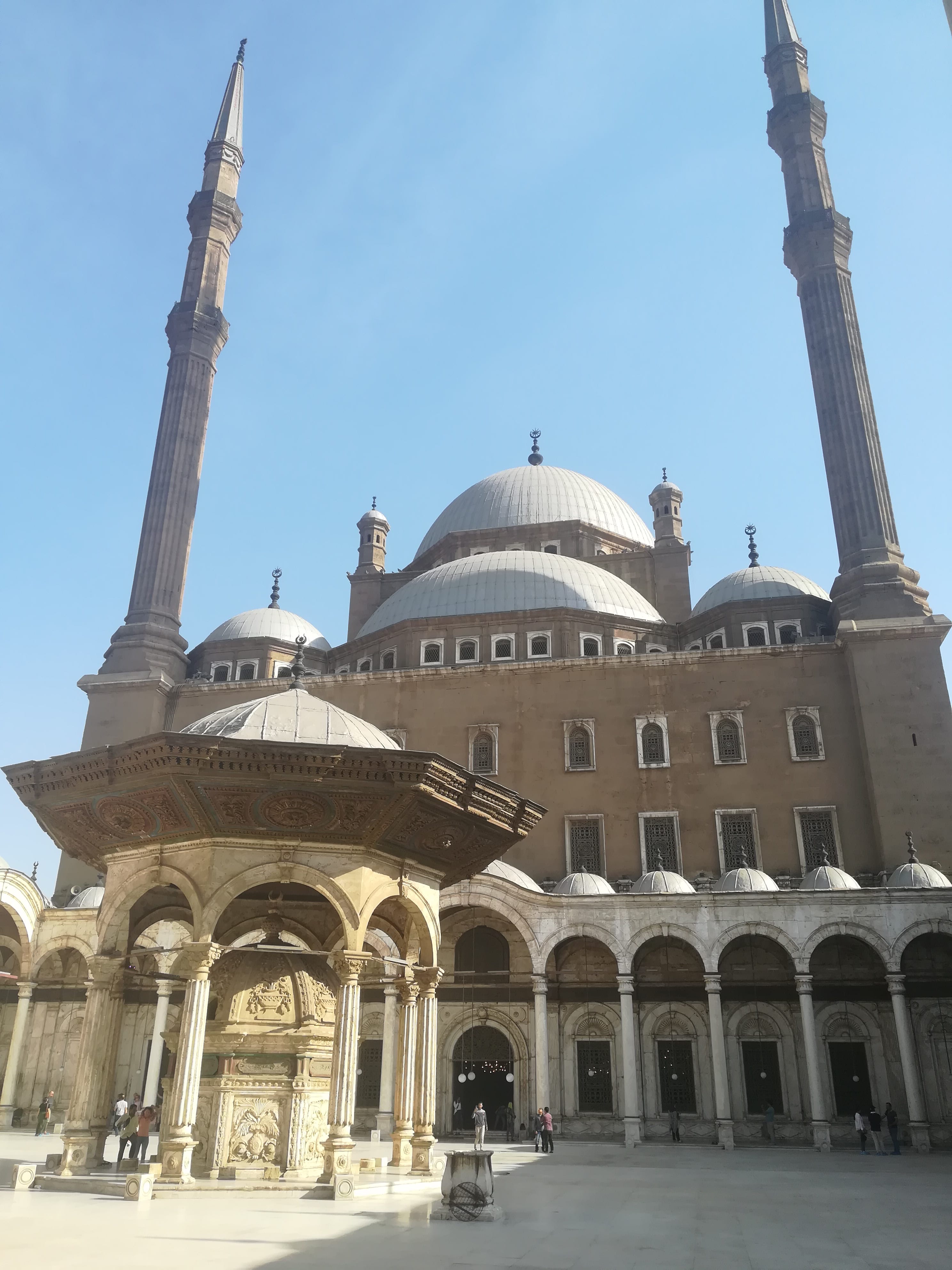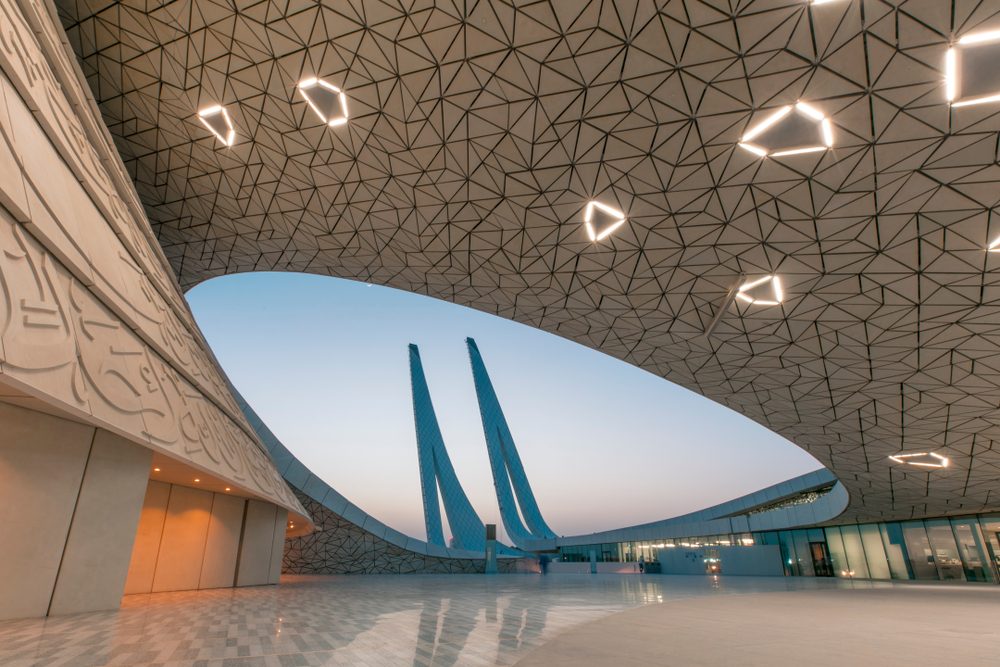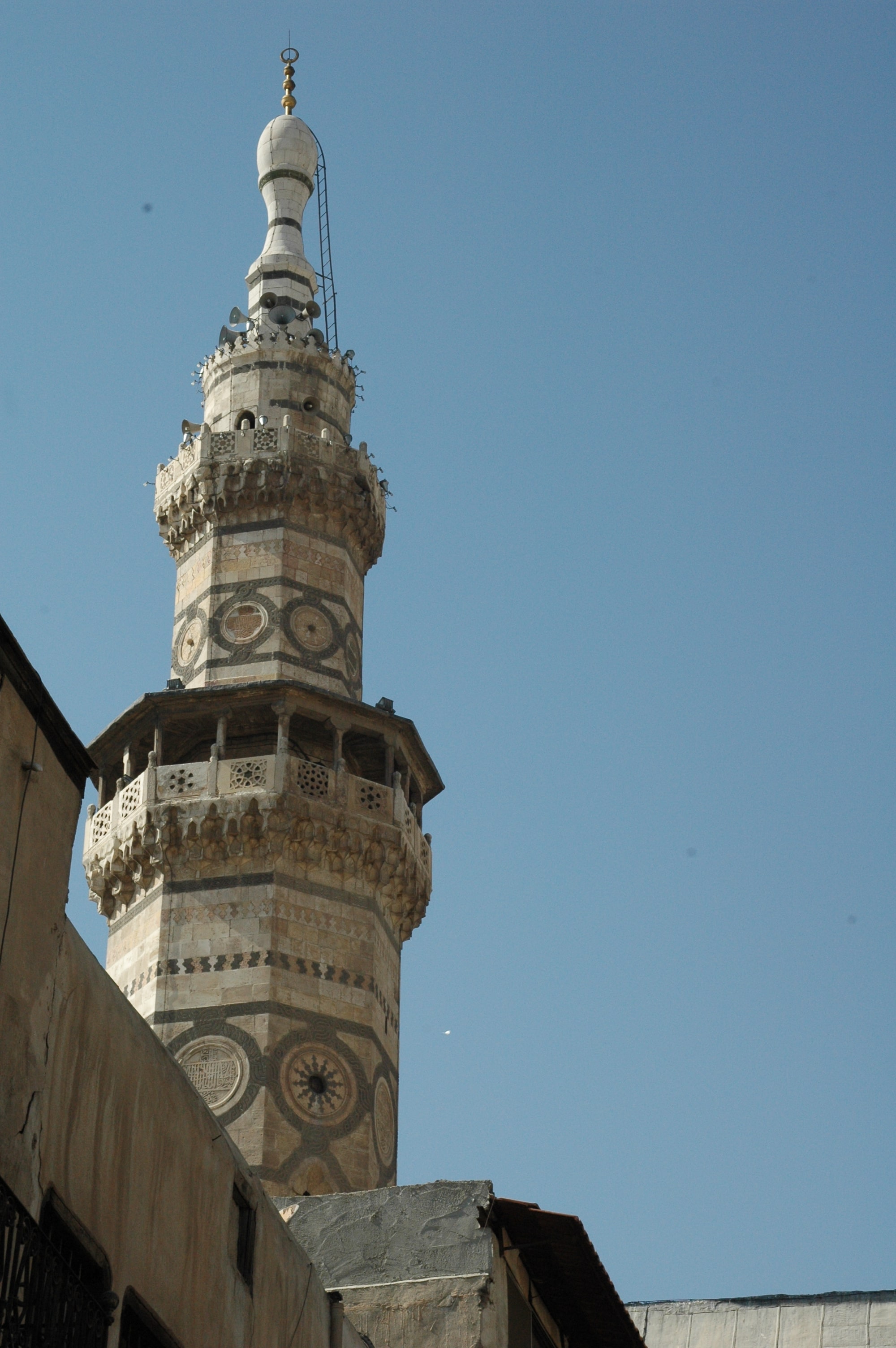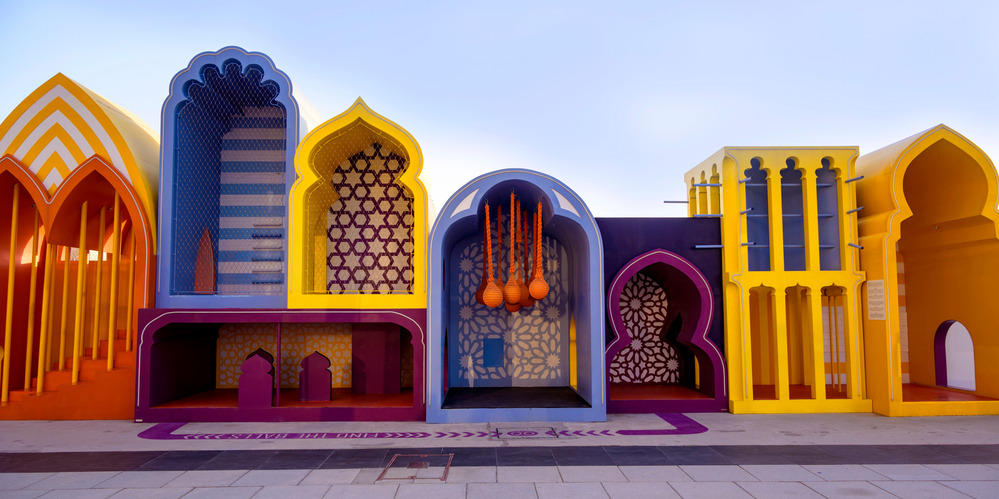The architectural evolution of mosques
The whole earth is a mosque, but the physical mosque itself has played an important spiritual and educational role throughout Islamic history.
Beirut: With every step you walk you purify yourself of earthly sins. With every breath you take you purify your soul. You are walking towards the “house of Allah”, the mosque. In the mosque your body and sole are unified to be between the hands of God.
Mosques give the feeling of being safe and secure. Worshiping God in the mosque opens the multi-dimensions of the world so in it you worship God and the wonders of the world.
Ahmad Hajj, a Lebanese interior designer, sees mosques as “the best schools for education. They teach Muslims brotherhood and equality, so they gather in one place and stand in one row and pray behind the imam. Mosques teach people to live in solidarity”.
Reading the history of Islamic civilisation will tell you that most of the great Islamic scientists had their places in mosques to teach people not only the science of religion (theology), but also the natural sciences and all other branches of science. Today mosques have added another dimension to their functions, the dimension of being touristic sites.
History of mosques
The Prophet Mohammad said “the earth is a mosque for you, so pray wherever you happen to be when prayer time comes”. This great saying makes the whole earth one large mosque (or masjid), but building a special place to practice the worshiping of God, to socialise with others and produce science makes the mosque a microcosm of the world.
With the spread of Islam all over the world mosques spread too. It is not possible to cover the history of mosques and their present role in one or even three articles. To cover it we are in need of countless volumes of books because every mosque has its own history and present day reality. Even the modern iconic mosques in the world have their own contemporary history. So the selection of mosques in this article is taken randomly just to give an insight about the greatness of the mosques and their role in all fields of life.
For example, the most three important symbolic mosques for Muslims are Al Medina mosque, and the Grand Mosque of Mecca in Saudi Arabia, and Al Aqsa mosque in Al Quds (Jerusalem), Occupied Palestine. Every one of them has its own spiritual symbolic meaning. It is said every Muslim that visits Al Medina mosque will win the Prophet’s intercession on the Day of Judgment, a visit to the Grand Mosque of Mecca is a visit to the earthly representation of God’s throne in heaven, and Al-Aqsa mosque represents the site of the Prophet’s famous Night Journey.
Al-Masjid an-Nabawi
The Prophet built the first mosque in the courtyard of his house in Medina in 622 BCE. It was the first materialistic sign of establishing Islam and Muslims as a community.
Adding to this is that when the Prophet made his hijra from Mecca to Medina in 622 BCE, he stayed at Quba from Monday to Thursday. He prayed at the site of the mosque of Quba which thus takes the honor of being the first site at which the Prophet prayed after his hijra from Mecca.
At that time Al Medina mosque served as a place of public worship, a seat of government, a place for education and a refuge for any destitute emigre.
Design
Islam has made a unique contribution to architecture and the architectural arts: calligraphy, geometry and garden designs. In its early days, like any other civilisation before it, it borrowed features from buildings associated with local religious and cultures before establishing its own specific architectural identity.
The Prophet’s mosque at Medina was originally a simple orthogonal walled space with an open courtyard having two or three doors and a shaded prayer enclosure (mousalla) with one end facing Mecca. The mousalla was supported by columns, which were spaced at regular intervals to hold up the roof structure. Now it is one of the biggest mosques in the world.
At the beginning, through the Ummayad period, the architecture of the mosque was based on the Prophet’s mosque, in Medina, but with time reforms took place. Throughout history certain elements of mosques were developed such as the minarat, the mihrab, the courtyard, al mousalla, all now became common to the aesthetic vocabulary of the mosque.
Only one aspect has remained constant which is the sign to show al qibla direction (towards Mecca) symbolised by a prayer mihrab.
The most famous mosques of the Ummayad period unfortunately do not exist anymore, with one built in Basra, Iraq in 670 BCE, and one at Kufa. They were rebuilt by Ziad Ibn Abihi. It is said that at that time the mosque of Kufa which was was the greatest mosque in the world. In 673 BCE the Ummayad governor of Egypt, Maslama, enlarged the mosque of Amr at Fustat and added to its design minarets. That was the first appearance of minarets in mosques.
The Great Mosque of Damascus, according to al-Fakih, cost seven years of khiraj (tax) to build, taking place under Caliph Al Walid, who also enlarged the mosque of Al Medina in 707 – 709 BCE.
The minaret of the Ummayad mosque in Damascus, Syria (Paul Cochrane).
During the Abassid period under Al Masour the circular city of Baghdad, with its palace and Great Mosque at the center, was built and was symbolic of the idea of world domination. Next to Al Mansour’s Qasr Al Dahab, crowned by a green dome, stood the Great Mosque. Unfortunately, nothing has survived of this architectural jewel. The mosque of Ibn Tulun in Cairo and the great Mosque of Qairawan represent the two most prestigious monuments of the 9th century.
Taking into consideration the development of sciences at every period, as long as we talk about buildings, it is related directly to geometry. Because “any architectural design is inherently an exercise in geometry,” according to Martin Frishman, author of ‘The Mosque: History, Architectural Development & Regional Diversity’. That is why we can notice some radical changes in the design of mosques from the Umayyad to the Abassid period, and from the Ottoman period to the present.
From an architectural perspective mosques have fixed structural elements whatever the size or place or time of building the mosque. These fixed structural elements are:
-
A demarcated space – partly roofed and partly open to the sky – to provide accommodation: Haram is the covered area; sahn is the opened one, and the pray hall is usually rectangular or square in plan.
-
The qibla wall and the mihrab: The prayer hall must have one wall facing Mecca. At the mid-point of this wall, known as the qibla wall, is placed the mihrab which is the central and most decorated spot of any mosque.
-
The minbar (pulpit) is always positioned to the right of the mihrab and consists of a staircase of varying height, with or without handrails leading to a small platform which is often crowned by a cupola-type of roof, usually in some attractive shape.
-
The dikka: a wooden platform or tribune of single-story height and positioned in line with the mihrab. The dekka can be reached by its own stairs.
-
The kursi: this is usually a well decorated wooden piece on which the Qu’ran is placed and kusri usually placed next to the dikka.
-
The maqsura: the place set apart to safeguard the life of imam.
-
The pool: this element may be with or without a fountain and may be intended for ablutions, or may be purely decorative.
-
The minaret: the original purpose of this tower-like element, apart from serving as a local landmark, was to ensure that the muezzin could be heard far and wide.
-
The portal: the mosque is nearly surrounded by walls.
These are the main elements of the mosque but also there is a major part which exists in every mosque, the decoration that goes with the functions of the mosque and its spiritual role. Here comes in Arabic calligraphy as a main element for decorative purposes and religious ones too.
According to Ahmad Hajj, “Arabic calligraphy has its importance because it expresses the Arabic and Islamic identity. It is used in decorating mosques, museums, tombs, shrines, and archaeological sites. We also see that each style of calligraphy has its own character, features and identity, and this is what the designer chooses in the decoration or internal and external adornment of the mosque to reflect the identity of the architectural and aesthetic design.”
From the earliest times the written word was used as the major and sometimes the sole type of mosque ornamentation. In general, Qur’anic texts are selected for inscriptions in mosques but quotations from the hadith can also be found in some mosques.
The treatment of writing as decoration have varied from as simple as possible to extraordinarily complex. The simplicity can be seen in the great mosque at Sousse, Tunisia (850 BCE) which has a single unornamented band of Qu’ran in kufic script. The high level of calligraphy as ornament can be seen on the interior walls of the Ulu Cami in Bursa, Turkey (completed in 1400 BCE).
|
Read - Music through the tunnel of time Arabic Calligraphy: Art of a nation and its historical development |
Functions of the mosque
With the spread of Islam two types of mosques appeared, in the early period, big city mosques and small ones. The mosques in the cities were usually one of two types. Large state buildings were used for Friday prayers and assemblies. Caliphs and their appointed governors often established their residences close to these mosques, while the small ones were built in neighbourhoods.
Mosques serve a variety of functions. In addition to praying, they hold great social, political and educational importance. Mosques are places for spiritual and public affairs. Some are built to satisfy both functions, the spiritual and the public, like Suleymaniye Kulliye of Istanbul, built in the 1500s, which consists of a congregational mosque, two schools, a hospital, a public bath, a public kitchen, fountains, housing, and shops, while others are built just for worshiping.
 The mosque of Saladin at the Cairo Citadel, Egypt (Paul Cochrane).
The mosque of Saladin at the Cairo Citadel, Egypt (Paul Cochrane).
Education
From the early days of the mosques, they have functioned as a centre of religious and non-religious education. At an early age, children learned to memorise passages from the Qur’an and Hadith. There was also higher educational learning, according to Hajj: “Senior scholars and leaders who carried the banner of Islam graduated from mosques. Also there were seminars and lessons in mosques in all Islamic countries. Scholars chose a place in the mosque and taught lessons, and the history of the mosques of Baghdad, Cairo, Basra, Cordoba, Damascus and Mosul”.
Mosques represent an educational place which attracted students from a wide range of economic backgrounds. Also their education provided an opportunity for upward mobility, and sometimes they provided a way for students to achieve high governmental positions.
In cities it was common to have a university-mosque complex. For example, Al Azhar in Cairo, established in 971 BCE, is widely acknowledged as the world’s oldest university, and still serves as an educational institution. Another example, in West Africa, is the Sankore University mosque in Timbuktu, Mali, which was built in 989 BCE on the orders of the city’s judge Qadi Aqib.
Today in America and Europe most mosques have part-time or full-time schools to provide an Islamic education.
Between 1850 and 1950, mosque education underwent radical changes. The Arab countries started to emerge and gain their independence, and started to build schools and universities in their modern meaning. As a result, mosque education started to vanish.

The Qatar Foundation mosque in Doha, Qatar (Shutterstock).
Touristic sites
With the advent of modern travel, moving from one place to another became relatively easy regardless of the distance. That pushed the tourism sector to improve and be a main part of the country’s economy. Also religious tourism became increasingly important.
With these developments mosques have opened a new dimension to their existence, as an economic contributor. For example, the Blue Mosque in Istanbul represents a major touristic site in Turkey. Hajj sees the Education City Mosque in Qatar as “an architectural masterpiece. The design idea is based on the concept of science and enlightenment, and through the architect’s idea the use of blocks in the form of two interconnected strips, at the end of them are two minarets that rise to the sky in the direction of the qiblah at a height of 90 metres, and the heart of the building was decorated with Arabic calligraphy.”
The other mosque which represent an attractive religious and touristic site, according to Hajj, is the “Great Mosque of Algiers, the largest mosque in Africa.”
“It was opened in 2020 at a cost of $1.5 billion, and it can accommodate about 120,000 people. The height of the minaret is 267 metres, the dome is 70 meters high and 50 metres in diameter with decorations inside from Islamic architecture. The style of the mosque is architecturally Andalusian Islamic with a mixture of modern architecture. It includes 12 separate buildings, and the interior of the mosque is decorated with the Andalusian character.”
With Saudi Arabia opening its doors to tourism, it is promoting some of the most spiritual mosques in the world, for Muslims, and the most historical.
The Prince Mohammed bin Salman Project for the Development of Historical Mosques was announced in 2018 and has been tasked with preserving and restoring 130 mosques situated throughout the kingdom. The first phase restored 30 mosques in 10 regions.
The oldest mosque dates to 1432 BCE. It was restored during the first phase at a cost of more than 50 million Saudi Riyal ($13.3 million). The second phase of the historic mosques development project includes 30 historical mosques distributed across the 13 regions of the kingdom.
© SalaamGateway.com 2022. All Rights Reserved


Ahmad Dirki